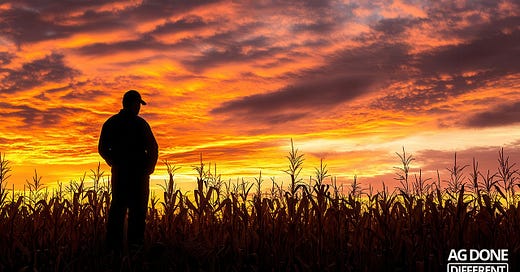People Don’t Buy Products. They Buy a New Identity.
Why your customers aren’t looking for features or benefits—they’re looking for transformation.
“People don’t buy goods and services. They buy relationships, stories, and magic.”
— Seth Godin
In the 1960s, Harvard marketing professor Theodore Levitt famously said, “People don't want to buy a quarter-inch drill. They want a quarter-inch hole.”
The lesson, articulated in his Havard Business Review article “Marketing Myopia,” is that we should not be focused on selling products but on fulfilling customer needs and desires.
But I don’t think he went far enough.
Your customers don’t want a drill bit. They don’t want a hole in their wall. They want their family picture nicely hung in the living room.
More than that, they want the feeling they will have when they look at that picture and remember what it was like to be in that moment.
They want the pride of a home that feels personal, curated, and complete. They want their guests to stop and admire it, asking about the story behind the photo.
People don’t want a drill bit. They don’t even want a hole. They want to feel important. They want to belong.
A few years ago, Reese’s Puffs ran a commercial that helps to explain what I mean.
In the commercial, a teenage boy steps up to the counter at the DMV and declares, “Hi, I want to apply for a driver’s license.”
Behind the counter, a middle-aged, no-nonsense DMV employee gives him a flat, unblinking stare. “What do you really want?” she asks.
He hesitates, caught off guard, but then smirks and replies, “To be able to legally drive a car?”
She leans forward slightly, unmoved. “What do you really, really want?”
Now he’s thrown. Searching for an answer, he says, “I want my independence…?”
Still not satisfied, she presses, “What do you really, really, really want?”
The boy furrows his brow, suddenly realizing the game. “To show my parents that I can solve my own problems—that I don’t want their help.” He’s picking up steam now. “The truth is that they need me more than I need them!”
The DMV worker raises an eyebrow. “What do you really, really, really, really want?”
Completely exasperated, he throws his hands up and shouts, “I WANT REESE’S PUFFS, OKAY?”
Without missing a beat, she slides a bowl of Reese’s Puffs cereal across the counter. “OK,” she says matter-of-factly.
The boy grabs the bowl, muttering, “Thank you.”
“Next!” she barks, as the title card fades in:
“Reese’s Puffs cereal: It’s what you really, really, really, really want.
Businesses in agriculture fail to do good marketing because they think that they need to tell THEIR story.
Everyone says so. Go to any industry marketing conference and you’ll hear “tell your story,” or “we need to tell ag’s story” on a loop.
It sounds good. So we build a story.
About our company history.
About our brand.
About the product we sell.
And then we wait.
And… nothing happens.
No one cares.
Sales don’t come. Your calendar doesn’t fill up with meetings. And you start to wonder about all of this story business.
The problem isn’t storytelling. It’s casting.
You made yourself the main character.
Your brand, the hero.
Your product, the answer.
Wrong.
The real hero? Your customer.
Your customers don’t care about what you make or who you are. They care about what you can do for them.
When they look for your solution, they want the way it will make them feel.
Your brand, your backstory—none of that matters until they know what’s in it for them.
The problem for most companies in agriculture today is that even when they talk about their customer’s problems, they stop at the most basic level.
"We deliver ROI for the farm."
"We’re your local retailer."
"You can buy seed, herbicide, and equipment from anyone, and we’re anyone!"
"PICK US, WE JUST HAD A 23-YEAR-OLD FARM KID RUN A REBRAND!"
(The polite business term for this last one is “we hired an agency.”)
The product you make, the brand you build, and the story you tell only matter when they serve what your customer really, really, really, really wants.
And that means selling the feeling and not just your “unique selling proposition.”
Farmers don’t buy products—they buy outcomes. More precisely, they buy feelings.
Strip away the jargon, and here’s what farmers actually want:
Safety.
Community.
Strength.
Stewardship.
Freedom.
Control.
Innovation.
Stability.
Reassurance.
Participation.
Belonging.
Respect.
Nostalgia.
Love of the Land.
Friendship.
Resilience.
If your marketing doesn’t speak to these, it doesn’t speak at all.
Want to build a company that shapes the future of agriculture?
Stop thinking about what you sell. Start thinking about what your customers are truly buying.
They’re not buying your product. They’re buying the future they want to live in.
Build your story around that, and they’ll listen.
Make something different. Make people care. Make fans, not followers.




